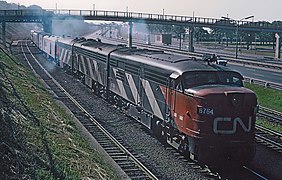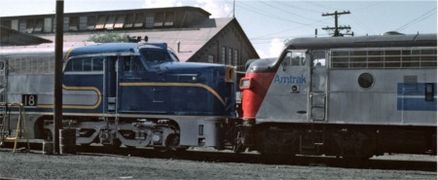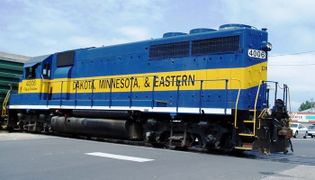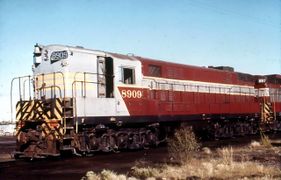Normal Direction of Travel
Summary: The Normal Direction of Travel or NDOT determines the direction and operation of lighting. It is Bit 0 of CV29 and is usually set to 0 (Off).
The Normal Direction of Travel is configured with CV 29. Changing CV 29 (Bit 0, Direction) reverses both the locomotive's direction of travel and its lighting effects. [1]
If the motor is mis-wired, resulting in the wrong direction of travel, the proper solution is to reverse the wires. The Direction bit may be used for something else, altering it unnecessarily could create problems later.
History
Early diesel locomotives were constructed with the cab at the front (cab/carbody units), such as the EMD/GMD F and E series, the ALCO PA/FA, and FM's C-Liners. With the appearance of the hood units (ALCO's RS series, EMD/GMD GPs or FM's HH series such as the Train Master), many railroads opted to run them long hood forward, with the engineer and fireman in the cab toward the rear, like a steam locomotive, for crew safety. The control stand in the cab was configured for operation in that direction at the factory, per the purchaser's instruction.
Later many units were converted to short hood forward operation for better visibility. The cab would be reconfigured to place the control stand in the correct position and orientation.
Diesel locomotives carry a small F designating that end of the vehicle as the front. This serves as a visual cue for crew, indicating in which direction the locomotive will move when signalling a forward or reverse operation. Particularly important in an era when locomotives were transitioning from long hood forward to short hood forward. It would not be obvious which direction was forward without a marker on the locomotive.
These converted high hood locomotives remained in operation for years, until being scrapped or modified with a chopped front nose. The short hood often housed equipment such as steam generators, which when removed made it possible to chop the nose for better visibility.
- ↑ S-9.2.2: This bit controls the locomotive's forward and backward direction in digital mode only. Directional functions, such as the headlights (FL and FR), will also be reversed so that they follow the locomotive’s new forward direction.







